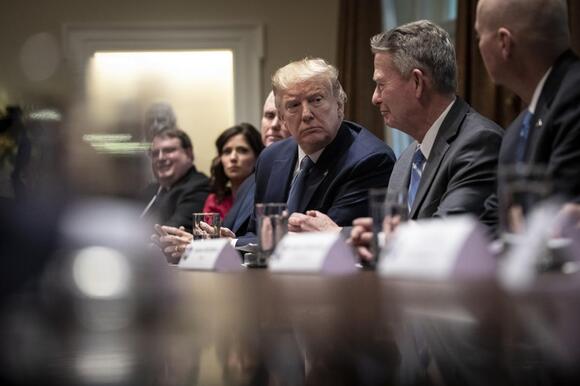PORTLAND, Ore. — As political tensions continue to simmer in Portland over President Donald Trump’s National Guard deployment and escalating protests outside the city’s Immigration and Customs Enforcement (ICE) facility, a once-fringe political movement is gaining renewed national attention: the Greater Idaho movement.
The campaign, launched several years ago by conservative activists in Eastern Oregon, seeks to redraw state boundaries so that many of Oregon’s rural, right-leaning counties join neighboring Idaho — a state they believe better represents their values.
What once seemed like a symbolic protest against Salem’s liberal dominance is now reemerging amid national debates over law, order, and federal authority. Supporters say Portland’s ongoing unrest and “soft-on-crime policies” have energized their cause.
Also Read
The Divide Between Portland and Rural Oregon
To understand Greater Idaho, it’s important to see the deep cultural and political divide that splits Oregon nearly in half.
Western Oregon — home to cities like Portland, Eugene, and Salem — leans heavily Democratic, with strong environmental laws, gun control measures, and progressive social policies. Meanwhile, Eastern Oregon’s rural counties remain deeply conservative, culturally aligned with Idaho rather than the liberal Willamette Valley.
The idea behind the movement is simple: if Oregon’s eastern and southern counties feel alienated by Portland’s politics, why not join Idaho instead?
“The people in Eastern Oregon believe in limited government, self-reliance, and law enforcement — the same values Idaho was built on,” said Mike McCarter, president of the Move Oregon’s Border for a Greater Idaho initiative. “We just want to be governed by people who share our beliefs.”
So far, 13 Oregon counties have voted in favor of exploring the move, including Baker, Malheur, and Jefferson counties. While these votes are largely symbolic, organizers say they reflect widespread frustration with Salem’s policies on taxes, gun control, and land management.
Portland’s Protests Fuel Rural Discontent
Recent scenes from Portland — from anti-ICE demonstrations to clashes between police and protesters — have given Greater Idaho renewed momentum.
“Every time Portland is on the news for another riot or standoff, more people east of the Cascades decide they’ve had enough,” McCarter told supporters at a recent town hall. “They don’t want their identity tied to what’s happening in Portland anymore.”
Even Idaho officials have shown tentative interest. Lawmakers in Boise have passed nonbinding resolutions agreeing to “study” the idea, calling it a potential “win-win” for both states.
“Eastern Oregon’s counties share our values, our economy, and our way of life,” Idaho Representative Barbara Ehardt (R-Idaho Falls) said earlier this year. “If Oregon doesn’t want them, we’ll take them.”
Still, the plan faces monumental legal and political hurdles. Changing state borders requires approval from both state legislatures and Congress — an outcome that has not occurred in modern U.S. history.
Trump’s Interest Could Change the Equation
What’s giving the Greater Idaho movement newfound oxygen is speculation that President Trump himself might publicly endorse it.
Trump has repeatedly blasted Oregon’s leadership for “lawlessness” and mocked Portland as “a failed city run by anarchists.” His administration’s clashes with Oregon Governor Tina Kotek and Portland Mayor Keith Wilson over ICE operations have only deepened the divide.
Political observers say it’s not impossible that Trump could use the Greater Idaho issue as a symbolic wedge, positioning it as an act of “freedom” for conservative Oregonians.
“If the violence continues in Portland, don’t be surprised if Trump throws his weight behind this idea,” said Chris Cardenas, a Boise-based conservative commentator. “He could frame it as letting good, law-abiding citizens escape liberal chaos.”
Mockery and Momentum Online
Not everyone is taking the idea seriously. On social media, the Greater Idaho movement has become a meme — with Reddit users joking about Idaho absorbing not just Oregon, but every state in America.
One commenter quipped: “Let’s just call it the United States of Idaho — Vegas, Hawaii, New York City, and all. The potato empire will reign supreme.”
Others were less amused. “It’s a scam,” wrote one Reddit user. “Greater Idaho is just a PAC grift that keeps asking for donations.” Another added, “If you don’t like Oregon, move. Don’t redraw the map.”
Still, behind the satire lies a genuine sense of frustration. For many in Eastern Oregon, the feeling of being politically silenced by Portland’s dominance runs deep.
“They don’t listen to us in Salem,” said Harney County rancher Tom Nielson, who voted for the measure last year. “We follow the laws, pay our taxes, and get treated like we’re the problem. Maybe Idaho would treat us better.”
A Long Shot — But a Loud One
Despite the movement’s growing visibility, most experts agree it remains highly unlikely to succeed. The constitutional process for redrawing state lines is complex and politically perilous.
“Oregon’s government has no incentive to give up land, population, or tax revenue,” said Norman Williams, a law professor at Willamette University. “It’s more about protest than policy — a symbolic middle finger to Salem.”
Still, symbols can be powerful. The Greater Idaho campaign taps into a broader national sentiment — the feeling that urban and rural America no longer share the same country, even when they share a state.
And for many frustrated Oregonians watching Portland’s unrest from afar, Greater Idaho isn’t just about borders. It’s about belonging.
As McCarter puts it: “We’re not leaving America. We just want to be part of an America that still feels like home.”












